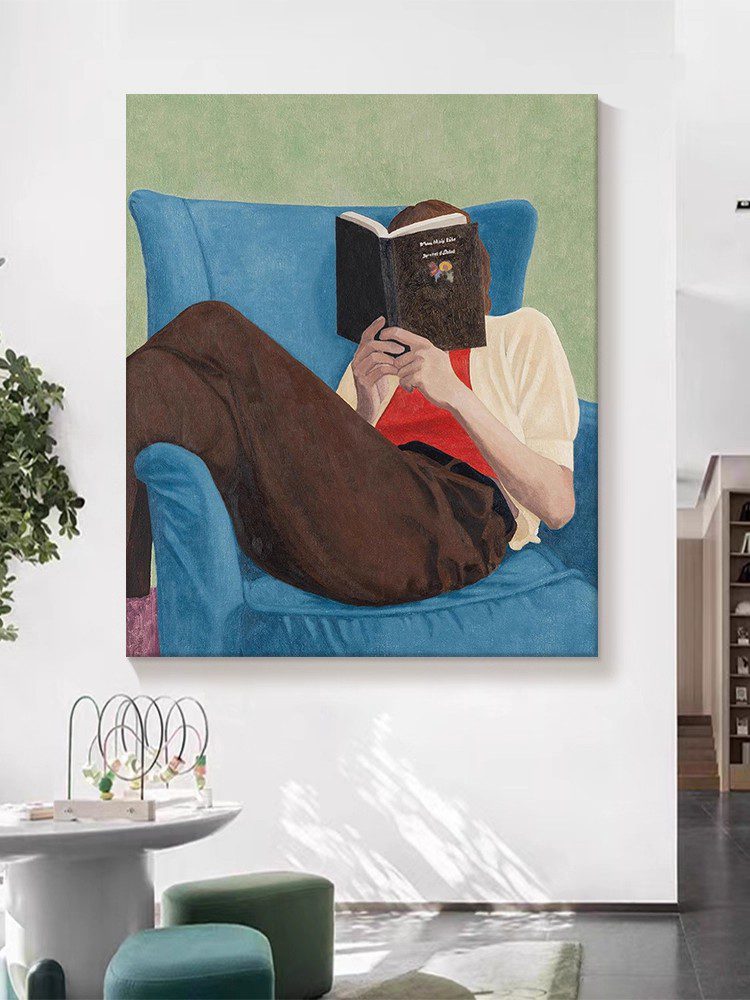Mastering Proportions in Hand-Painted Portrait Oil Paintings: Techniques for Accuracy and Expression
Achieving realistic or stylized proportions in portraiture requires a blend of anatomical knowledge, observational skills, and creative interpretation. Below are strategies to ensure your figures feel balanced, dynamic, and emotionally resonant, whether aiming for lifelike detail or expressive distortion.
Establishing a Solid Foundation with Basic Guidelines
- The Head as a Measuring Unit: Use the length of the head as a reference for the rest of the body. In a standard adult figure, the torso typically spans two to three head lengths, while the legs account for three to four. For children, proportions shift—their heads are larger relative to their bodies, and limbs shorter. Sketch these ratios lightly with a pencil or thin brush before adding details to maintain harmony.
- Vertical and Horizontal Alignments: Check symmetry and balance by drawing imaginary lines across key features. The corners of the eyes, tops of the ears, and base of the nose often align horizontally, while the center of the lips, chin, and pupils can form vertical connections. Adjust these lines dynamically for tilted heads or asymmetrical poses, ensuring they guide rather than constrain your composition.
- Dynamic Poses with Gesture Lines: For figures in motion, start with a fluid “gesture drawing” using a single, continuous line to capture the spine’s curve, shoulder tilt, and hip angle. This approach prevents stiffness by emphasizing the body’s natural rhythm. Overlay this line with basic shapes (ovals for joints, cylinders for limbs) to refine proportions without losing energy.
Refining Facial Features with Anatomical Precision
- Eye Placement and Spacing: Eyes are usually positioned halfway down the head and spaced one eye-width apart. The inner corners align vertically with the edges of the nostrils, while the outer corners connect to the ears’ top edges. To convey age, adjust these proportions—children’s eyes appear larger and closer together, while older adults may have slightly narrower spacing due to skin sagging.
- Nose and Mouth Relationships: The nose’s base sits between the eyes, with its length roughly matching the distance from the eyelids to the eyebrows. The mouth’s corners align with the pupils when looking straight ahead, and its width spans about two-thirds of the nose’s base. For expressive portraits, exaggerate these relationships—a wide grin lifts the mouth corners toward the eyes, while a frown deepens the nasolabial folds.
- Ears and Hairline Considerations: Ears extend from the eyebrows to the nose’s base, though their size and shape vary widely. Hairline placement is equally critical—a high forehead may suggest youth or receding hair, while a low hairline adds maturity. Sketch hairlines with loose strokes to imply volume, adjusting their curve to complement the face’s oval or square shape.
Adapting Proportions for Style and Emotion
- Caricature and Exaggeration: To create playful or dramatic portraits, distort proportions intentionally. Enlarge features tied to emotion (e.g., bulging eyes for surprise, a wide nose for humor) while shrinking others for contrast. Maintain balance by keeping one or two elements realistic—a caricatured face with accurately rendered hands feels more grounded and relatable.
- Childlike Innocence vs. Adult Realism: Children’s portraits benefit from softer, rounder proportions—chubby cheeks, short necks, and oversized eyes. Use warm, pastel tones to enhance their youthful glow. Adult figures, by contrast, demand sharper jawlines, longer necks, and subtler color transitions. Introduce wrinkles or sagging skin sparingly, focusing on areas like the eyes and mouth to suggest experience without aging the subject prematurely.
- Cultural and Historical Influences: Research artistic traditions to inform your approach. Renaissance portraits often emphasized idealized proportions with elongated necks and serene expressions, while Impressionist works used loose brushwork to suggest movement, sacrificing strict accuracy for emotional impact. Modern portraits might blend these styles, using exaggerated proportions to critique societal norms or celebrate individuality.
Using Light and Shadow to Reinforce Proportional Depth
- Chiaroscuro for Three-Dimensionality: Define facial planes by contrasting light and dark tones. The forehead, nose bridge, and cheeks catch more light, while the eye sockets, jawline, and neck recede into shadow. Use a medium-toned base layer, then build highlights with titanium white and deepen shadows with burnt umber or ultramarine blue. Softly blend edges where planes meet to avoid a chalky appearance.
- Directional Light Sources: Consistent lighting unifies proportions by clarifying spatial relationships. Side lighting accentuates bone structure, making cheekbones and brow ridges prominent, while front lighting flattens features for a softer look. Experiment with backlighting to create silhouettes or rim lighting that outlines the head, adding drama without relying on detailed proportions.
- Texture Variation for Realism: Vary brushstrokes to mimic different skin textures. Smooth, blended strokes work for young skin, while rough, impasto marks suggest wrinkles or stubble. Paint hair with directional strokes that follow its growth pattern, using darker tones for roots and lighter highlights for tips. For clothing, looser brushwork contrasts with detailed facial features, drawing attention to the subject’s expression.
By integrating these techniques, your portrait oil paintings will transcend technical accuracy, becoming vessels for emotion and storytelling. Whether capturing a fleeting expression or a timeless ideal, understanding proportions empowers you to manipulate them creatively, ensuring your figures resonate with authenticity and artistic intent.
